Human Resource Management (HRM) - 2025 Complete Guide
Human resource management (HRM) is vital for everyday organizational tasks but can still be challenging to grasp at times.
Because it is vast, we often do not understand the full extent of the HRM process. To follow all the current trends and tools, HR also keeps changing with time.
So, what is HRM, how does it work, and why should you bother understanding it?
What is Human Resource Management (HRM)?
Human Resource Management's purpose is to manage an organization’s staff. The HR set of programs, practices, and policies includes employees, applicant tracking, and several other sub-tasks.
- Recruitment: It starts with aligning the opportunity with the employer brand. The HR department:
- Design job descriptions.
- Picks high-potential candidates.
- Executes the selection process.
- Employs several tools and technologies to work on the recruitment funnel.
- Training: Learning and development help employees develop the necessary skills to execute the role and have a successful future. It fosters an environment of motivation where employees and the company invest in learning.
- Compensation: The HR team designs a compensation model that aligns with the company's goals and budget. It ensures timely payouts and that the employees know their salary components thoroughly.
- Performance management: Tracking and managing employee performance helps guide toward a suitable career path. Performance management also helps managers during annual appraisals.
Learn how technology fuses with human resource management to make processes more efficient and help track important workplace metrics.
What is the purpose and importance of strategic human resource management?
HRM is vital for company culture, productivity, and risk mitigation, which keeps an organization running smoothly.
If done right, you should be able to see its positive impact in aspects like:
- Effective allocation of company resources
- Efficiency in employee hiring, training, and retention
- Education and development of the workforce (both personal and professional)
- Clear and observable stances on important social issues derived from the core values
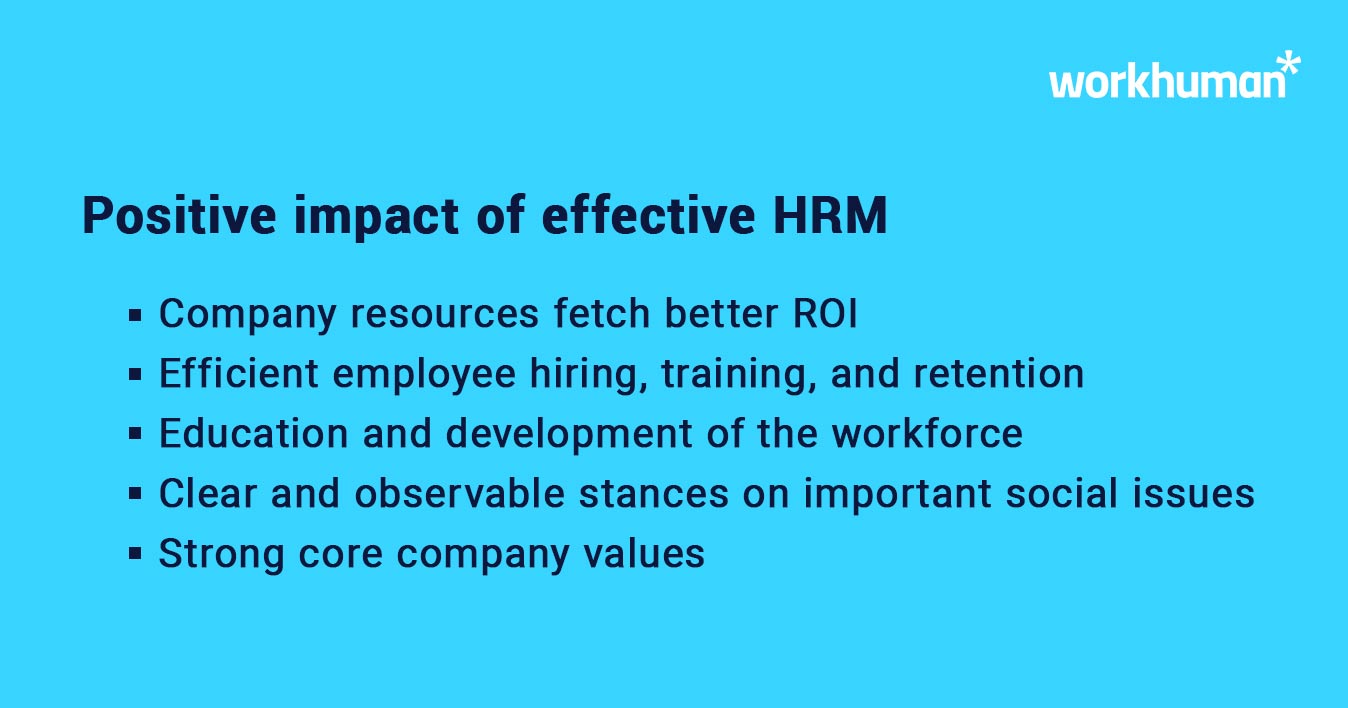
HR plays an important role in the success of a modern organization. In today's business landscape, potential employees emphasize the organization's brand value and work culture.
An organization's culture is a crucial aspect of its identity and employee well-being. Discover HR’s Role as a Cultural Champion here!
HR management helps organizations with strategic planning and setting up processes and systems to take a holistic approach and position themselves as high-value employers.
Increased productivity and performance
Forward-thinking HR professionals must create and nurture a tradition of recognition to foster higher productivity and performance. It makes employees feel that their work is meaningful. This makes recognition, appreciation, and gratitude critical components of driving productivity and high performance.
Better employee relations
Recognition combined with a career progression path, bonuses, and fair pay make employees feel appreciated and cared for. The HR department strives hard to build this relationship for employee loyalty.
Continuous feedback with growth opportunitiesOpens in a new tab also impacts relations and retention by up to 41%. Relationship building leads to higher engagement and 59% less turnover.
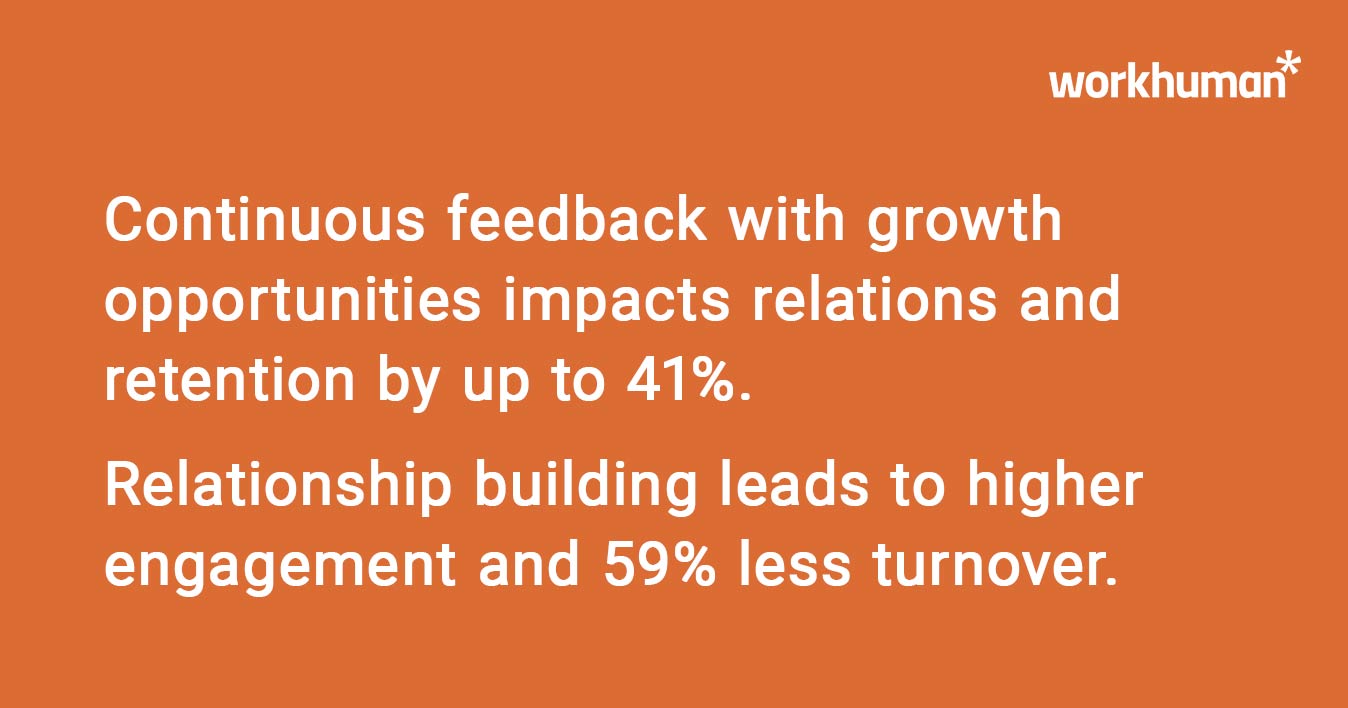
Talent management
Talent management is an essential part of an organization's HR process and includes attracting, selecting, and retaining employees.
Attracting the wrong type of talent leads to lower productivity at work, loss of revenue, and high turnover. Therefore, it must be one of the organization's missions to build the brand and make the company a high-value workplace.
The HR department uses several tools, practices, and techniques to screen the best fit for an organization. Want to know what they do? Here are 4 Ways to Attract and Retain Great Employees.
Performance evaluation
From establishing and maintaining standards to coaching managers and aligning the processes, the HR department is a mediator in setting up the right performance evaluation process.
Strategic human resource management ensures the performance evaluation and appraisal process is simple and smooth. From weekly feedback to annual reviews, performance evaluation is an ongoing process.
Employee growth
People management at work entails continuous employee growth. Research shows that 92% of employees relate training and development to job engagement, and 47% have used it to advance in their career roles.
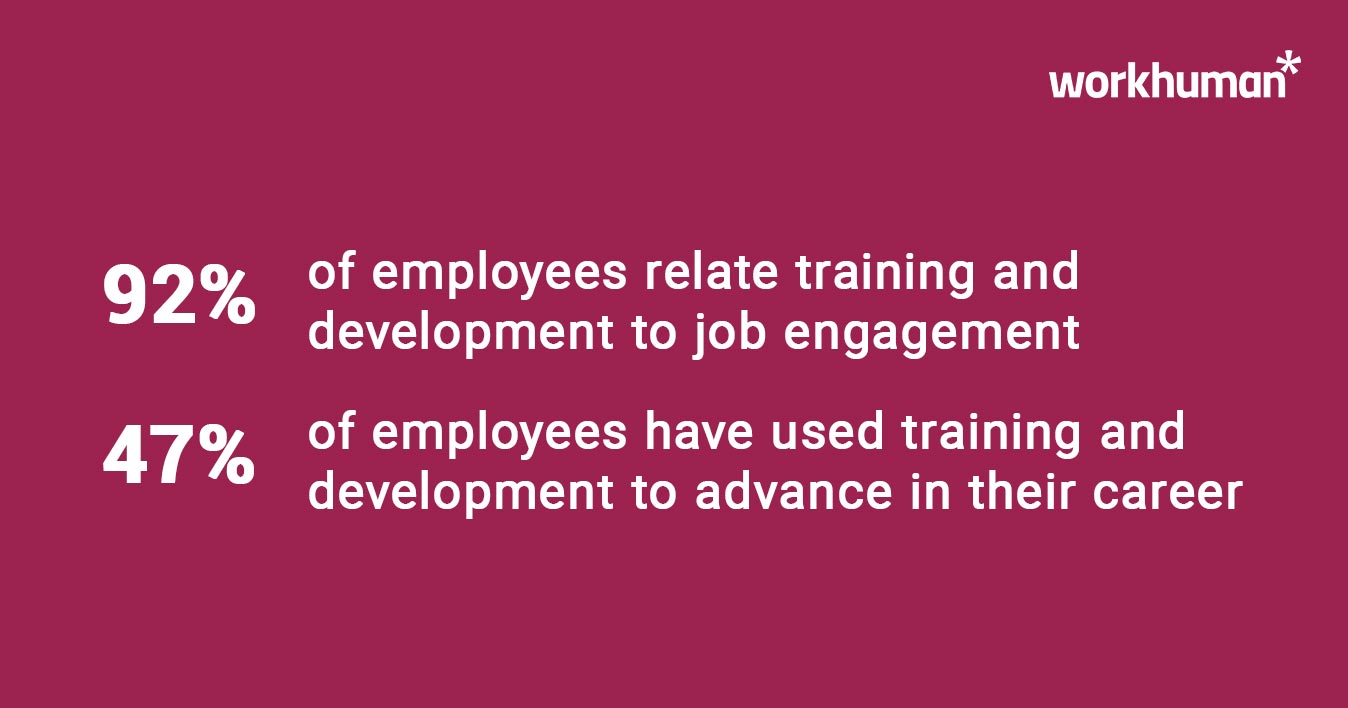
The job of HR is to provide enough career and personal development opportunities within the organization to foster employee growth and work satisfaction.
Attracting and retaining talent
A potential employee's decision to join a company directly relates to compensation and benefits, brand value, workplace culture, and social initiatives. This is the reason 77% of employers focus on employee experience.
The human resource department designs the brand value and recruitment strategies to attract and retain top talent. For example, Adidas runs a 'Before the School' program to bring fitness to children between 5 and 12.
F5 Networks has partnered with the National AIDS and STI Control Program (NASCOP) to help lower the spread of HIV/AIDS and offers its employees opportunities to contribute to their service.
What are the functions of human resource management?
The HRM process identifies and recruits the right people as per the company's needs. It also manages the employees’ performance and provides development opportunities.
Let us take a closer look at the top HRM functions, how they work to serve the organization’s goals, and what trends you can expect for the near future:
Employee training and development
Training involves activities designed to equip employees with the skills required for their current roles. At the same time, development focuses on activities that enhance their long-term career prospects and goals within the organization.
To optimize this process, you might consider the best employee development programs to implement in your organization:
- On-the-job training: It allows employees to acquire new skills while executing day-to-day duties.
- Classroom training: Conducted away from the work environment, this traditional format helps employees learn new skills or expand their knowledge in a structured setting.
- eLearning programs: As online learning becomes more popular, eLearning continues to expand. These programs enable employees to learn at their own pace and cater to individual learning needs.
- Gamification: Introducing game-like elements into training makes learning engaging and enjoyable. Gamification helps increase information retention and motivates employees to engage with the material.
- Virtual reality training: Rising in popularity, virtual reality offers immersive simulations where employees can practice new skills in a controlled, risk-free environment.
Compensation and benefits
As the workforce evolves, companies must strive to keep their employees content and engaged. Compensation benefits are key strategies in achieving this.
Options vary from competitive salaries and bonuses to stock options. However, health insurance is highly valued, with 88% of employees considering it the most desirable benefit. Other favored perks include on-site childcare, flexible working hours, and telecommuting options.
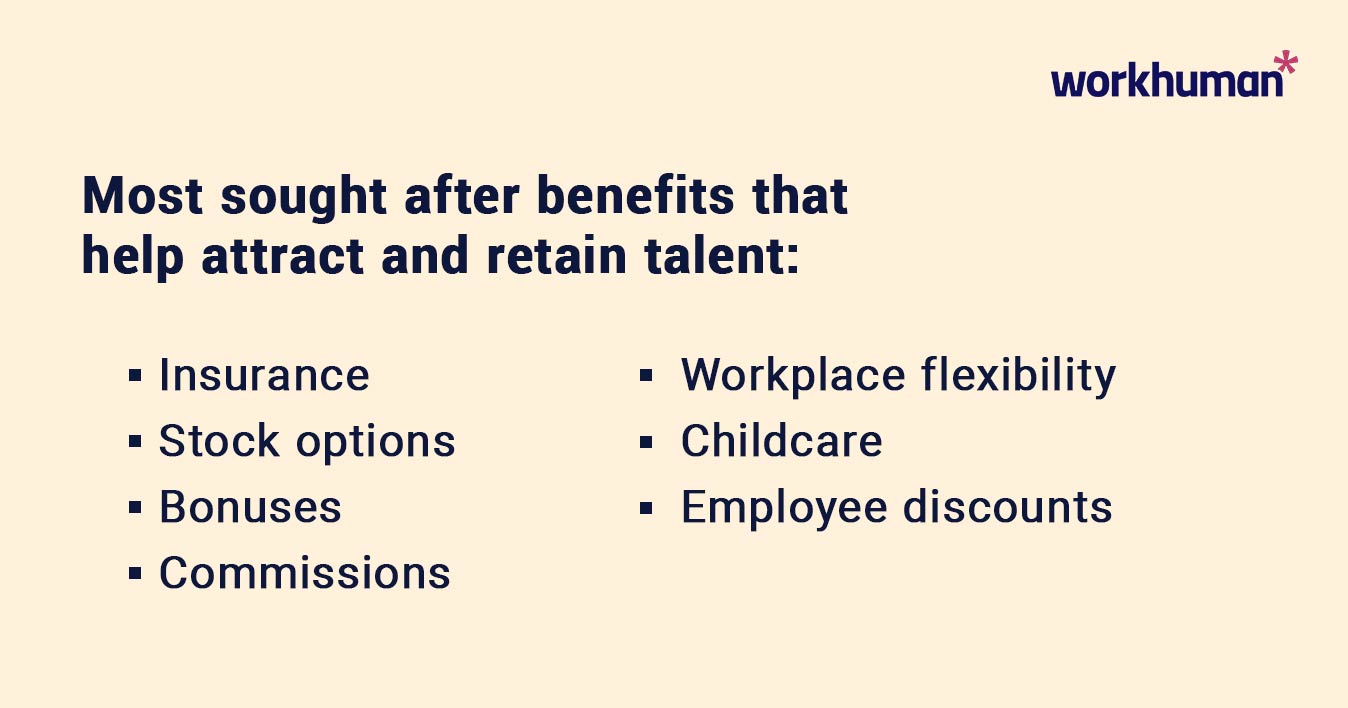
- Insurance: Health and life insurance benefits remain the top factors attracting employees to an organization. Some employers go the extra mile and provide add-on cover for spouses and dependent parents.
- Stock options: High-value employees/assets in a fast-growing company often get stock options that not only provide a stake but also increase their net worth over time.
- Bonuses: Businesses can reward significant contributions or higher profits by offering bonuses to their employees. This motivates the employees to continue working towards the organization's growth.
- Commissions: Companies offer commissions to sales representatives or those who get high-value, long-term contracts.
- Workplace flexibility: Although it has always existed, the culture of flexible working has increased after COVID-19. This could include working from home or at flexible hours.
- Childcare: To encourage employees to come to work sooner after parenthood, companies offer childcare facilities such as daycare with nannies within the office campus.
- Employee discounts: Product and service companies offer a fixed discount to their employees based on their identification number. This can be on purchasing items in limited quantities.
The importance of human resource management extends to each of these areas. It starts from ideation to designing and implementing the benefits program.
For retention and managing people within an organization, there is no universal solution to be achieved with payroll and benefits. HR managers must tailor compensation and benefits to align with employees and the company.
Here are four ways forward-thinking leaders are modernizing their compensation and benefits and total rewards strategies to meet the never-before-seen challenges of today’s world.
Learn more
Recruitment and onboarding
Did you know that a robust onboarding program can increase employee retention by 82%? Such significant results are not achievable without the expertise of human resources managers who understand the nuances of recruitment and onboarding.
Some trends that HR managers might consider in the coming years are:
Recruitment process outsourcing
Recruitment process outsourcing (RPO) is an emerging trend where organizations outsource all or part of their recruitment activities to an external provider.
This provider takes on various responsibilities, including sourcing and screening candidates, onboarding new hires, possibly developing new recruitment strategies, and managing the recruitment budget.
Overall, RPO offers a cost-effective solution for organizations that lack the internal HR resources required to manage their recruitment processes. The RPO market will grow significantly, with a projected compound annual growth rate (CAGR) of 13.9% through 2030, says a report by PR Newswire.
Personalized and predictive analytics
With the ever-growing pool of data available, we can only expect to see more HRMs rely on predictive analytics for recruitment programs.
Personalized and predictive analytics allow the HR staff to identify the best candidates for open positions, making the onboarding process more personalized.
Employee referral programs
Employee referral programs effectively leverage your existing workforce to identify quality candidates. Moreover, employees who recommend candidates typically take an interest in their referrals' success due to rewards and peer-to-peer training opportunities.
Social Media Recruiting
Social media recruiting, while unconventional, is becoming a popular HRM trend, adopted in recruitment strategies by organizations such as Kroger and ShoreTel.
Given the widespread use of social media by the workforce, it's unsurprising that it has become a valuable recruiting tool. Knowing where to look on these platforms lets you quickly and efficiently connect with numerous potential candidates.
Long-term onboarding
The onboarding process is crucial for integrating a new employee into the company's culture, values, and expectations. However, the effectiveness of onboarding improves when you view it as a long-term program that extends well beyond the initial months. Here’s what this comprehensive approach can include:
- Extended shadowing periods: New hires shadow experienced colleagues for extended periods to fully grasp their roles.
- Personalized learning experiences: Tailor the onboarding process to meet the specific needs and learning preferences of each new employee.
- Continued support beyond the first year: Support doesn’t end after the first year; employees continue receiving guidance and resources throughout their tenure.
While these long-term onboarding programs require more time and resources, they often result in a worthwhile investment in employee satisfaction and retention.
Employee relations
One of the most recognized responsibilities of a human resource manager is managing employee relations (ER) programs.
The influence of an ER manager is evident in improved communication and collaboration between staff and upper management. They also play a crucial role in fostering a positive work environment and resolving conflicts.
Here's how they achieve these outcomes:
Employee Assistance Programs (EAPs)
EAPs offer confidential counseling and support services to employees, helping them address personal and work-related issues. HR managers can utilize these programs as an opportunity to specifically target and address prevalent issues within the workforce.
Employee engagement programs
As employee burnout becomes more prevalent, many companies are exploring strategies to boost engagement.
Engagement programs enhance employees' satisfaction and dedication to their jobs and the organization. These initiatives typically include team-building activities, recognition and reward programs, and efforts to improve communication.
HR teams may also choose to adopt top HR software solutions such as Workhuman’sⓇ Social Recognition® to monitor engagement levels and deliver timely appreciation where necessary.
Flexible work arrangements (FWAs)
Flexible work arrangements (FWAs) have gained new importance following the Covid-19 pandemic.
These arrangements vary widely, including telecommuting, flexible hours, compressed work weeks, and job sharing.
In today's business environment, FWAs also enhance organizational agility and responsiveness to change by providing employees with flexibility in when, where, and how they work.
Given that 87% of employees would choose flexible arrangements if given the option, as per McKinsey report titled 'Americans are embracing flexible work — and they want more of it', it is worthwhile to consider incorporating additional flexible options into your HRM strategies.
Health and safety
A robust health and safety program must tackle the specific risks found in the workplace, and it falls to HR managers to regularly review and update these programs.
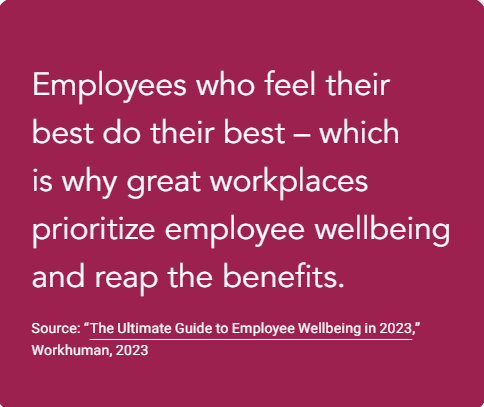
Here are several approaches to managing these aspects of HRM:
Employee wellness programs
Nowadays, most businesses include some form of employee wellness program in their benefits offerings, going beyond just basic health insurance and dental coverage. Such programs may encompass fitness and nutrition initiatives, stress management courses, mental health support, and more.
However, there are important considerations to keep in mind when implementing these wellness programs:
- Voluntary participation: Programs should be optional. Employees should never feel coerced into participating, as this could breed resentment.
- Customization is key: Wellness programs should cater to individual needs rather than adopting a one-size-fits-all approach. This should rely on a needs assessment that recognizes the diversity of the employee population.
- Affordability and accessibility: These programs should be both affordable and accessible without requiring employees to incur additional costs or take time off work.
Safety training
The HRM process also aims to identify and mitigate potential hazards in the workplace to minimize risks.
Common safety training programs include:
- First aid and CPR training
- Emergency preparedness training
- Workplace violence prevention courses
- Hazard communication training
These initiatives are crucial for ensuring a safer work environment.
Ergonomics
While you might associate workplace ergonomics primarily with adjusting your office chair or positioning your computer screen, it encompasses much more. For HRM professionals, ergonomics analyzes how employees interact with their work environments and how to optimize these interactions for enhanced safety, health, and productivity.
When considering ergonomics in the workplace, keep these points in mind:
- It's crucial to assess the ergonomics of the entire office, not just individual workstations
- Ergonomics extends beyond furniture to include other environmental factors, such as lighting and noise levels
- It's important to address the ergonomic needs of all employees, not solely those currently experiencing pain or discomfort.
Performance management
Human resource teams monitor and manage the performance of employees and managers through metrics such as:
- Project timelines
- Resource utilization
- Budget adherence
- Customer satisfaction (CSAT)
- ROI
- Net promoter score (NPS)
They further manage employee performance through these methods:
- Goal setting: This foundation of performance management aligns individual goals with the organization and communicates them clearly to all parties. HR team ensures that the goals are clear, measurable, and achievable and design their programs accordingly.
- 360-degree feedback: A multi-dimensional view of an employee's performance raises the individual's self-awareness and fosters a collaborative work culture. The HR team makes it a part of the work culture.
- One-on-one meetings: Structured one-on-one meetings between employees and managers build trust and encourage an open discussion about career progression and personal challenges.
- Self-assessment: This is a self-reflection exercise in which employees evaluate their performance against the objectives. The HR facilitates this process and guides the employees, but the process remains autonomous. It is a powerful tool to help employees take ownership of their career path.
- Scorecard: A balanced scorecard discusses performance from the perspectives of financial benefits, customer feedback, internal business processes, and learning and growth. It tracks and measures holistic performance for well-rounded growth.
Build a workplace culture
HR plays the role of a companion to adapt to a changing workplace culture through the following activities:
- Align the employee's goals and career progression with the organization's mission, values, and goals.
- Create an environment of continuous feedback and self-improvement.
- Promote workplace safety, inclusion, diversity, and equity of opportunities.
The HR team facilitates honest conversations about the topics above to build a human workplace. This shifts the work culture from purely administrative to one that prioritizes employees' well-being.
Foster diversity, equity, inclusion, and belonging (DEIB)
Research shows that disengagement climbs by 12x if there is no sense of belonging at the workplace. Employees feel disengaged and actively seek other work opportunities.
Diversity, equity, inclusion, and belonging (DEIB) are crucial in building a work environment where employees collaborate and thrive. HR stands at the forefront of this transformative journey and must build policies around DEIB initiatives. It leads to a 4.3x increase in employees' perception that they are at a great workplace.
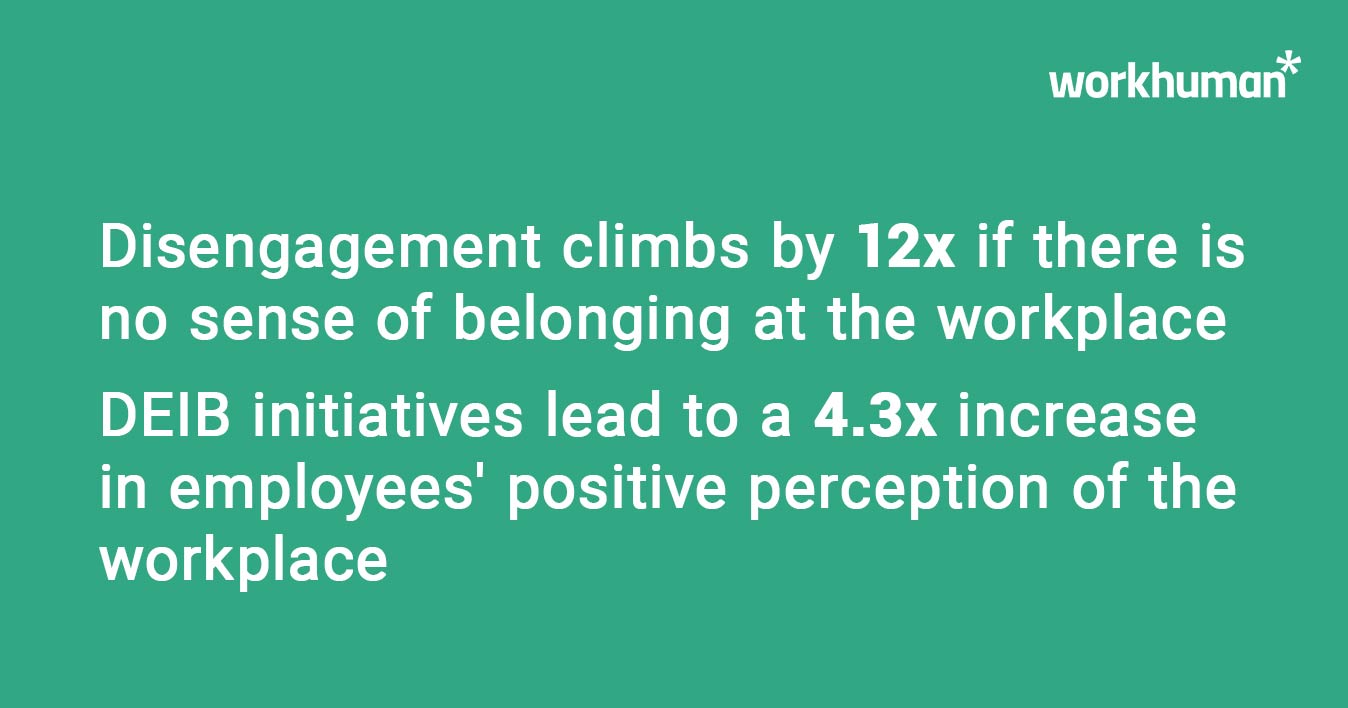
HR plays a pivotal role in creating policies, implementing fair and equitable hiring practices, promoting diversity, and fostering an inclusive workplace.
How has HRM changed through the years?
Back in the day, HR primarily handled payroll, basic on-the-job training, policy compliance, record keeping, and occasionally organized events to boost morale.
Now, the scope of HR has broadened significantly through the globalization of business and the increased emphasis on human capital management within organizations.
Employee growth has always been a focal point, but today, there's a noticeable shift toward a couple of key principles:
- A focus on the future: Programs should equip employees with skills needed for future success, not just for current roles.
- A focus on the whole person: Rather than solely concentrating on job-specific skills, programs should encompass the entire individual, supporting both personal and professional development.
Focus on building stronger human relationships. Innovative organizations build human-centric workplaces, and HR's role boosts engagement, performance, and retention. Some ways HR can help build stronger human relationships at work are:
- Help employees manage stress and burnout and ask for feedback.
- Provide recognition for employees' hard work and innovation. A genuine 'thank you' goes a long way in building relationships.
- Show that you are on top of important issues such as DEIB.
- Build stronger ties by celebrating life events such as buying a house, having a baby, getting married, or birthdays.
The role of technology in HRM A human resource management system (HRMS) assists the HR team in managing all the factors discussed above while offering self-service capabilities to employees. The key functionalities of HRM software are:
- Candidate management: Manages the brand promotion to attract potential high-value candidates and for existing employees to apply for internal jobs. It assists the HR team in searching, applying, interview scheduling, onboarding, etc.
- Employee management: A central portal for all support services and compliances makes it easy for HR and employees to resolve issues faster. It builds relationships between managers and employees and maximizes HR service delivery.
- Employee engagement: An HRMS is an easy route to completing training courses, acquiring new skills, developing a career path, and becoming a mentor.
- Workforce optimization: Companies can see sharp economic swings during mergers and acquisitions. An HRMS assists companies in taking a proactive approach towards implementing a workforce optimization strategy and improving engagement.
- Payroll: The HR team can calculate and pay the salaries as well as manage deductions month-on-month. Employees can take charge of elective deductions and use the portal to extract salary, tax, and earnings statements.
- Benefits administration: Employees can use HRMS to view and apply for benefits such as medical treatments and transportation. It results in better collaboration and approval processes with managers and HR teams.
- Learning management: Employees use HRMS to access the L&D module and upskill themselves directly. The HRMS also offers curriculum modules, evaluations, and certifications for compliance training.
- Reporting and analytics: The HR team and managers use HRMS to run reports, view KPIs, and evaluate employee performance against set objectives. The reports help leadership do company-wide analysis for better decision-making.
- Rewards management: Rewards include salaries, hourly extra wages, bonuses, variable payments, overtime, shift differentials, sales commissions, and merit increases. HRMS manages these features and lets the employees monitor their reward eligibility at any time.
- Attendance and time management: Process time-off requests and manage balances, monitor absenteeism, and enable time cards through HRMS with an integrated payroll system.
Conclusion
In today's business environment, HRM principles and programs are crucial for bridging the gap between upper management and employees, covering everything from recruitment to ergonomics.
As business trends have evolved, so have the roles and strategies of human resource managers. It may be time to reevaluate and refresh your HRM processes, incorporating new trends, programs, and tools to maintain and enhance your organization's efficiency.
About the author
Ryan Stoltz
Ryan is a search marketing manager and content strategist at Workhuman where he writes on the next evolution of the workplace. Outside of the workplace, he's a diehard 49ers fan, comedy junkie, and has trouble avoiding sweets on a nightly basis.